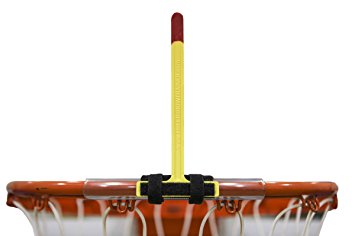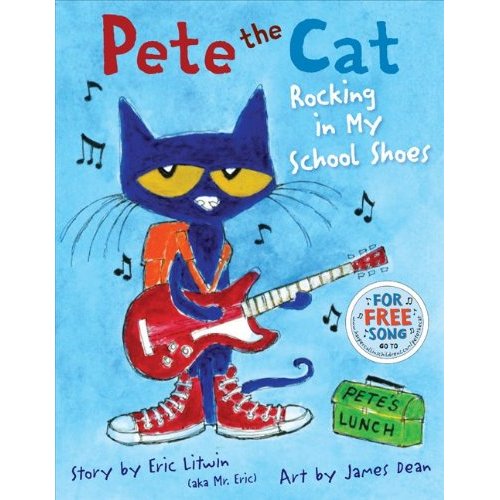 I couldn’t be happier to be interviewing literary agent Esther Fedorkevich of The Fedd Agency. Esther is a first-generation American, the daughter of Ukrainian immigrants born in Argentina and China — and she has that indefatigable immigrant spirit in spades. After breaking records selling Bible studies for Lifeway and then working for The Lampo Group, she learned from one of the best, Dave Ramsey, and set her sights on starting her own agency. That was ten years ago. Today The Fedd Agency is a bustling firm serving some of the top authors in the CBA industry.
I couldn’t be happier to be interviewing literary agent Esther Fedorkevich of The Fedd Agency. Esther is a first-generation American, the daughter of Ukrainian immigrants born in Argentina and China — and she has that indefatigable immigrant spirit in spades. After breaking records selling Bible studies for Lifeway and then working for The Lampo Group, she learned from one of the best, Dave Ramsey, and set her sights on starting her own agency. That was ten years ago. Today The Fedd Agency is a bustling firm serving some of the top authors in the CBA industry.
Esther is also the only agent I know who started a writers conference, Re:Write, which started last year in San Diego. Re:Write is an intimate conference with some of the best voices around. Definitely a highlight of my travel last year. This year Re:Write is in Esther’s hometown of Austin, taking place October 18-20, and it promises to be a powerful resource for writers, published or not. This year I look forward to speaking there!
As announced last week, The Fedd Agency and I have teamed up to offer $120 off the regular registration price. To take advantage of this offer, register via http://rewriteconference.com/ and when prompted enter promo code ALLEN2013. This offer has been extended to July 15, 2013.
Let’s get to the interview! I think you’ll enjoy hearing from Esther. And I’m very happy to ask her some of the questions that readers of this blog sent in.
Esther, tell us about The Fedd Agency. What types of books do you represent?
We represent all types of books, both fiction and non-fiction. The one common thread is that we always represent books that offer people hope and encouragement.
Would you describe how you view your role as an agent?
It’s more than just getting my clients a book deal. I work with my clients through the entire process and I love building and planning for a successful future in publishing. My greatest strength as an agent is really helping sell my author’s heart and passion and finding them champions with a publishing partner. I have this quote in my office from Mark Batterson: “WORK LIKE IT DEPENDS ON YOU and PRAY LIKE IT DEPENDS ON GOD.” I do that every day with my authors. My team and I, along with my authors, work 110 percent and then we pray like crazy. It’s a really great way to live your life, and I’m learning it is a great way to do business as well!
What are you looking for and what are you sick of seeing?
I am open to seeing everything, but I’m always looking for incredible stories – stories with impact, originality, and a new point of view. I really love working with authors that are great writers, which is something you cannot fake. As for what I’m sick of seeing, only one thing: really bad proposals. Please don’t send me a proposal that’s incomplete and not well thought out!
Pretend you’re an aspiring writer who knows her field but does not have contacts in the publishing industry. How would you pursue representation from a literary agent?
That’s a tough one, because it really depends on the size of your platform. If you are a first-time author who has no contacts in publishing, the best advice I can give you is to network, even (and especially) if it’s outside of your comfort zone. Meet people, talk to others, share your story, go to conferences like Re:Write, and connect with others that are trying to do the same thing you are doing. Networking is invaluable in the publishing industry; I can’t stress that enough.
Beyond that, there are always ways to get in front of an agent. You just need to make sure you’re prepared and that you really believe you have something unique. I once had an author be so intentional that she went out of her way to make contact with one of the pastors I represent in her city. She convinced the pastor to read her book and then asked him to introduce her to me. I thought that was really a smart way to go about it. That pastor called me and said, “Esther, I read this proposal and met with this new author and I really feel like it’s something you should look at.” I take those kinds of referrals seriously, because it’s all about relationships. It turns out the pastor was right. I ended up signing that author, who is now working on her third book. Pretty cool, eh?
What do you love about the work you do as an agent? What do you hate?
I love talking to people. I’m on the phone 24-7. I’m BIG on relationships and I still believe you need to pick up the phone and talk with someone. I don’t hate any one thing about my job, but I’d say the most frustrating thing about my job is waiting on publishers. (Sorry Chad, but it’s true!)
A reader asked the following question: It can take as much time and energy to find an agent as it does to get the attention of a publisher directly. How should an aspiring writer discern whether to pursue an agent’s representation?
I think you will know when you’re ready. Yes, it’s sometimes really tough to get an agent and, more importantly, to find the right one. If you have a good platform, have a solid proposal, and are ready to talk to an agent, I suggest researching agents that you think would be a good fit for you. Go to their websites and find out what types of projects they represent. It’s important you find someone who believes in you — someone you think will represent you well.
I had a first-time author that I passed on because they just didn’t have a big enough platform. I loved his idea, but gave him the advice to keep working on his platform, and to consider self-publishing an e-book and then get back to me in six months with his growth numbers. Well, six months later he showed me his e-book (which sold ten thousand copies!) and his blog numbers (50 percent growth!). So I signed him. It was clear the work ethic was there, that he really had “the want to.” If I was going to invest all of my time and energy into his project, I wanted to see that he was ready to be “all in,” and I was thrilled to see he was.
The industry and the marketplace have changed a lot over the years. What do you see as the most significant changes?
Social media has changed the way we can communicate with people. Use it to connect with your audience. Also, the obvious thing now more than ever, is that there are so many opportunities to self-publish your book. It’s amazing! Now is the time to be an author, and the power to do that is in your hands. It’s so exciting!
What do you think makes for the strongest author-publisher relationships?
Well, Chad, I will share a personal story of ours. It’s interesting; for years you have been a big fan of Mark Batterson, an author I represent. Every year, you make the effort to call and ask to meet with Mark, to grab a cup of coffee with him or just say hi. You always let him know how much you would love to publish him and how much you believe in his writing. You didn’t give up! I think we’ve been talking for four years about Mark. And it was because of your persistence and belief in him that when it was time to find a publisher, it was an easy choice. You invested in him. You showed him that you were going to be a great partner for him. That investment and belief make for the strongest author-publisher relationships. How did that story end? Mark signed with Baker and couldn’t be happier!
Why should writers come to your Re:Write Conference? What’s unique about it?
Re:Write was created with the author in mind. It’s not a flashy conference. It’s not big. It doesn’t have all the bells and whistles of those arena conferences you may have attended. But that was all intentional. We created Re:Write as an intimate gathering for authors to connect, network, and learn from successful authors who once struggled just like the rest of us – and often still do. Re:Write creates a space where authors can be real, honest, and vulnerable. They learn from one another, from writers who’ve “made it,” and from top publishing industry members who are happy to share their wisdom with authors they may just represent one day.
If you’re serious about your writing, attend Re:Write. If you’re struggling with whether to self-publish or traditionally publish, attend Re:Write. If you need help fully grasping the power and reach of social media and blogging, attend Re:Write. If you need encouragement and direction in your publishing journey, attend Re:Write. It’s an investment. But it’s one that will pay off. I guarantee it, and I hope to see each of you there this October!
If you had only one piece of advice for a writer who is just getting started, what would it be?
Never give up! If you are called to write and want to make a career with your writing, keep going. Don’t get discouraged. Whenever I start working with an author I always tell them: No one has ever gotten more rejections than me. I get rejected every day by publishers. My job is to keep going and find that one publisher who is the right fit for my client. I can’t give up or I will be out of business. And I don’t want my authors to give up either. When the time is right, it’s just right!
~~~~
Do you have questions for Esther? She’ll be checking in regularly to interact with you.
Has this interview been helpful or illuminating to you in some way? If so I hope you’ll help me share it with others.
Literary agent Esther Fedorkevich talks about how to get published over here… <Tweet this!>
Listen in on a conversation between literary agent Esther Fedorkevich and editor @chadrallen… <Tweet this!>
Want to know how to secure representation with a literary agent? Listen to agent Esther Fedorkevich…<Tweet this!>
[callout]Bonus Content: The best way to start a nonfiction book project is by writing a book proposal. I’d love to give you a free copy of my Book Proposal Guidelines, used by countless authors to write their book proposals. [button href=”https://www.chadrallen.com/getbookproposalguidelines” primary=”true” centered=”true” newwindow=”false”]Download[/button][/callout]













 Imagine all writing exists on a pyramid. At the top of the pyramid is abstract writing, writing that may explain or teach but doesn’t show or engage the imagination. The bottom of the pyramid is concrete writing. It shows or illustrates. It does engage the imagination; it helps me see (or hear or smell or taste or touch) something.
Imagine all writing exists on a pyramid. At the top of the pyramid is abstract writing, writing that may explain or teach but doesn’t show or engage the imagination. The bottom of the pyramid is concrete writing. It shows or illustrates. It does engage the imagination; it helps me see (or hear or smell or taste or touch) something.

